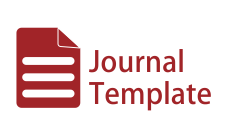Comparative analysis of monetary functions in Islamic and conventional economic systems
DOI:
https://doi.org/10.21580/jiemb.2023.5.1.20425Keywords:
Islamic economics, money functions, Sharia principles, conventional economics.Abstract
The article investigates the distinction between the functions and perceptions of money within Islamic and conventional economic systems. The purpose of the study is to elucidate the Islamic principles governing the use of money, highlighting the fundamental differences from conventional views and their implications for modern economies. The methodology employed is a qualitative approach with descriptive-analytical methods, incorporating primary sources from classical Islamic scholars and contemporary experts, as well as secondary data from relevant academic literature. The findings reveal that, unlike in conventional economics where money can be treated as a commodity, Islamic economics defines money strictly as a medium of exchange and a standard of value, not for hoarding or speculative purposes. This research underscores the necessity of adhering to Sharia principles to ensure a just and sustainable economic system. The implications suggest a re-evaluation of modern financial practices to align more closely with Islamic economic teachings, promoting ethical financial behavior and Indonesia.
Downloads
References
Abdullah, A. (2020). The Islamic Monetary Standard: The Dinar and Dirham. International Journal of Islamic Economics and Finance Studies, 6(1), 1-29. https://doi.org/10.25272/ijisef.659330
Affandi, F. (2020). Fungsi Uang dalam Perspektif Ekonomi Islam. EKSYA: Jurnal Ekonomi Syariah, 1(1), 82-91. https://jurnal.stain-madina.ac.id/index.php/eksya/article/view/505
Allen, F. & Gale, D. (2000). Bubbles and Crises. The Economic Journal, 110(460), 236-255. https://doi.org/10.1111/1468-0297.00499
Annisa. (2017). Konsep Uang dan Kebijakan Moneter Dalam Hukum Ekonomi Islam. MIZAN: Journal of Islamic Law, 1(2), 109-126. https://doi.org/10.32507/mizan.v1i2.7
Cucinelli, D. (2016). Can speed kill?. The Journal of Risk Finance, 17(5), 562-584. https://doi.org/10.1108/jrf-03-2016-0035
Endriani, S. (2015). Konsep Uang: Ekonomi Islam vs Ekonomi Konvensional. Anterior Jurnal, 15(1), 70–75. https://doi.org/10.33084/anterior.v15i1.201
Feistel, R. and Ébeling, W. (2016). Entropy and the Self-Organization of Information and Value. Entropy, 18(5), 193. https://doi.org/10.3390/e18050193
Harahap, S. A. R. (2019). Pemikiran Imam Al-Ghazali Tentang Fungsi Uang. Laa Maisyir, 6(1), 1-15. https://doi.org/10.24252/lamaisyir.v6i1.9401
Harahap, A. M. (2018). Teori Uang dalam Ekonomi Makro Islam: Teori Uang dalam Ekonomi Makro Islam. Al-Razi: Jurnal Ilmu Pengetahuan dan Kemasyarakatan, 18(2), 1-16. https://ejournal.stai-br.ac.id/index.php/alrazi/article/view/16
Hasan, A. (2005) Mata Uang Islami: Telaah Komprehensif Sistem Keuangan Islam. Jakarta : RajaGrafindo Persada
Hasbi, M. Z. N. (2022). Keunggulan Dinar dan Dirham Sebagai Mata Uang Perspektif Al-Ghazali dan Ibnu Taimiyah. SHIDQIA: Jurnal Keuangan dan Perbankan Syariah, 1(1), 44-65. https://doi.org/10.30999/jsn.v1i1.766
Huda, N., Handi, R.I., Nasution, M. E., & Wiliasih, R. (2013). Ekonomi Makro Islam: Pendekatan Teoritis. Jakarta: Kencana Prenada Media Group.
Ichsan, M. (2020). Konsep Uang dalam Perspektif Ekonomi Islam. Profetika: Jurnal Studi Islam, 21(1), 27-38. https://doi.org/10.23917/profetika.v21i1.11646
Ilyas, R. (2016). Konsep uang dalam Perspektif Ekonomi Islam. Bisnis: Jurnal Bisnis dan Manajemen Islam, 4(1), 36-57. http://dx.doi.org/10.21043/bisnis.v4i1.1695
Ismi, Y. (2021). Conception of Money in Islamic Economic Dimension. Talaa: Journal of Islamic Finance, 1(2), 121–132. https://doi.org/10.54045/talaa.v1i2.343
Karim, A. A. (2001). Ekonomi Makro Islam. Jakarta: Rajagarafindo
Mansur, A. (2009). Konsep Uang dalam Perspektif Ekonomi Islam dan Ekonomi Konvensional. Al-Qanun: Jurnal Pemikiran dan Pembaharuan Hukum Islam, 12(1), 155-179. https://doi.org/10.15642/alqanun.2009.12.1.155-179
Muthoifin, M. (2018, February). Mengungkap Isi Pendidikan Islam Perspektif Al-Qur’an Surat Al-Ashr Ayat 1-3. In Prosiding University Research Colloquium (pp. 206-218).
Nasution, M. E. (2006). Pengenalan Eksklusif Ekonomi Islam. Jakarta: Kencana Prenada Media Group.
Purnamasari, S., Kurniaty, K., & Rozak, P. (2023). Review of Riba and its impact in the Islamic Meta Economy. American Journal of Economic and Management Business (AJEMB), 2(1), 33-40. http://dx.doi.org/10.58631/ajemb.v2i1.15
Rahmawaty, A. (2013). Uang dan Kebijakan Moneter dalam perspektif ekonomi islam. Equilibrium, 1(2), 181-199.
Raj, M. (2003). Paper or Gold. International Trade 0309016, University Library of Munich, German
Risti, K. M., Mulia, K., & Hanif, M. (2024). Tahapan Pelarangan Riba Serta Pengaruhnya Pada Aspek Sosial, Politik dan Ekonomi. Ushuly: Jurnal Ilmu Ushuluddin, 3(1), 1–18. https://doi.org/10.52431/ushuly.v3i1.2057
Rozalinda. (2014). Ekonomi Islam: Teori dan Aplikasinya pada Aktivitas Ekonomi, Jakarta: RajaGrafindo Persada.
Shah, H. M., & Bukhari, S. A. G. (2020). The Concept and Role of Money in Modern Economy: An Islamic Perspective. Rahat-Ul-Quloob, 4(2), 72-81. https://doi.org/10.51411/rahat.4.2.2020.254
Sifat, I. & Mohamad, A. (2018). From metal to paper: validating paper money from islamic perspective. International Journal of Ethics and Systems, 34(1), 2-19. https://doi.org/10.1108/ijoes-06-2017-0090
Sukardi, D. (2021). Investasi Emas dalam Perspektif Hukum Islam. Jurnal Hukum Ekonomi Syariah, 5(02), 98-110. https://doi.org/10.26618/j-hes.v5i02.5302
Susanti, R. (2017). Sejarah Transformasi Uang Dalam Islam. Aqlam: Journal of Islam and Plurality, 2(1), 33-42. http://dx.doi.org/10.30984/ajip.v2i1.509
Vanni, K. M. (2022). Strategi Pemasaran Syariah “Bakar Uang” Pada Perusahaan E-Commerce Shopee. Jurnal Ekonomi dan Bisnis, 23(1), 16-27.
Wahyuddin. (2009). Uang dan Fungsinya (Sebuah Telaah Historis dalam Islam). Jurnal Sosial Humaniora (JSH), 2(1). http://dx.doi.org/10.12962/j24433527.v2i1.664
Wulandari, N. L. N., Sari, D. M., & Zahro, R. (2024). Konsep Uang Dan Lembaga Keuangan. Gudang Jurnal Multidisiplin Ilmu, 2(5), 203-207.
Downloads
Published
Issue
Section
License
Authors who publish with this journal agree to the following terms:
Authors retain copyright and grant the journal right of first publication with the work simultaneously licensed under a Creative Commons Attribution-ShareAlike 4.0 International License that allows others to share the work with an acknowledgement of the work's authorship and initial publication in this journal.
Authors are able to enter into separate, additional contractual arrangements for the non-exclusive distribution of the journal's published version of the work (e.g., post it to an institutional repository or publish it in a book), with an acknowledgement of its initial publication in this journal.
Authors are permitted and encouraged to post their work online (e.g., in institutional repositories or on their website) prior to and during the submission process, as it can lead to productive exchanges, as well as earlier and greater citation of published work (See The Effect of Open Access).



